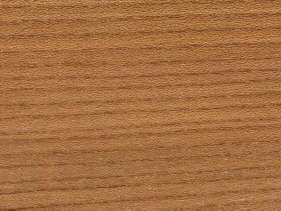Scientific Name
Ulmus glabra
Trade Name
Wych elm
Family Name

Common Names
Alm, Elm, Mountain elm, Scotch elm, Skogsalm, Wych elm
Regions of Distribution
Eastern Europe, Western Europe
Countries of Distribution [VIEW MAP]
Denmark, Estonia, Finland, Latvia, Lithuania, Sweden, United Kingdom
Common Uses
Bedroom suites, Bent Parts, Boat building, Cabinetmaking, Canoes, Caskets, Chairs, Chests, Concealed parts (Furniture), Desks, Dining-room furniture, Dowell pins, Dowells, Drawer sides, Fine furniture, Floor lamps, Furniture , Furniture components, Furniture squares or stock, Hatracks, Kitchen cabinets, Lifeboats, Living-room suites, Office furniture, Planks, Radio – stereo – TV cabinets, Rustic furniture, Shipbuilding, Stools, Tables , Turnery, Utility furniture, Wardrobes
Environmental Profile
| The future survival of this species is at risk | ||||||||||||
| Generally widespread, secure, and abundant within most of its range | ||||||||||||
| Generally secure within its natural habitat |
Been assigned a Candidate status in Finland
Distribution Overview
This northern European species is native to Great Britain, particularly to the western and northern regions of the country. It is often found growing as a wild tree in Highland glens or upland valleys, and is also cultivated as an ornamental in parks.
Heartwood Color
| Brown | ||||||||||||
| Yellow | ||||||||||||
| Red | ||||||||||||
| Orange | ||||||||||||
| Light brown |
Greenish streaks sometimes occur
Sapwood Color
| White | ||||||||||||
| Yellow | ||||||||||||
| Brown | ||||||||||||
| Red | ||||||||||||
| Clearly differentiated from the heartwood |
Grain
| Even | ||||||||||||
| Straight |
| Straight |
Texture
| Medium | ||||||||||||
| Coarse | ||||||||||||
| Fine |
Natural Durability
| Moderately durable | ||||||||||||
| Resistant to termites | ||||||||||||
| Non-resistant to powder post beetles | ||||||||||||
| Non-resistant to marine borers | ||||||||||||
| Susceptible to insect attack | ||||||||||||
| Very little natural resistance | ||||||||||||
| Sapwood susceptible to attack by powder post beetles |
Odor
| No specific smell or taste |
Kiln Schedules
| Schedule A: United Kingdom |
Drying Defects
| Checking | ||||||||||||
| Distortion | ||||||||||||
| Distortion (twist/warp) is likely |
Ease of Drying
| Fairly Easy | ||||||||||||
| Moderately Difficult to Difficult | ||||||||||||
| Dries at a fairly rapid rate |
Lumber should be stacked carefully with closely spaced stickers.
Tree Size
| Bark width is 15-20 mm | ||||||||||||
| Bole length is 10-20 m | ||||||||||||
| Sapwood width is 10-15 cm | ||||||||||||
| Tree height is 20-30 m |
Spreading crown
Blunting Effect
| Medium effect |
Boring
| Fairly easy to very easy |
Cutting Resistance
| Satisfactory sawing properties |
Gluing
| Glues well |
Nailing
| Good nailing properties |
Planing
| Fair to Good Results | ||||||||||||
| Fairly Easy to Very Easy | ||||||||||||
| Planes to a satisfactory finish |
Resistance to Impregnation
| Sapwood is treatable | ||||||||||||
| Heartwood is resistant |
Response to Hand Tools
| Fairly Difficult to Difficult to Work | ||||||||||||
| Easy to Work | ||||||||||||
| Responds well |
Sanding
| Very Good to Excellent Results | ||||||||||||
| Fair to Good Results | ||||||||||||
| Satisfactory |
Screwing
| Satisfactory characteristics |
Turning
| Fairly Easy to Very Easy | ||||||||||||
| Very Good to Excellent Results | ||||||||||||
| Fair to Good Results |
Steam Bending
| Watch for buckles and fractures | ||||||||||||
| Very good |
Polishing
| Fair results |
Staining
| Satisfactory staining qualities |
Strength Properties
| Hardness (side grain) = medium | ||||||||||||
| Crushing strength = high | ||||||||||||
| Bending strength (MOR) = high |
Heavy and Dense
Numerical Data
| Item | Green | Dry | English |
| Bending Strength | 9217 | 14244 | psi |
| Density | 37 | lbs/ft3 | |
| Hardness | 990 | lbs | |
| Impact Strength | 42 | 30 | inches |
| Maximum Crushing Strength | 4149 | 6708 | psi |
| Shearing Strength | 1613 | psi | |
| Stiffness | 1426 | 1615 | 1000 psi |
| Work to Maximum Load | 14 | 18 | inch-lbs/in3 |
| Specific Gravity | 0.49 | 0.53 | |
| Weight | 44 | 36 | lbs/ft3 |
| Item | Green | Dry | Metric |
| Bending Strength | 648 | 1001 | kg/cm2 |
| Density | 592 | kg/m3 | |
| Hardness | 449 | kg | |
| Impact Strength | 106 | 76 | cm |
| Maximum Crushing Strength | 291 | 471 | kg/cm2 |
| Shearing Strength | 113 | kg/cm2 | |
| Stiffness | 100 | 113 | 1000 kg/cm2 |
| Work to Maximum Load | 0.98 | 1.26 | cm-kg/cm3 |
| Specific Gravity | 0.49 | 0.53 |
References
HMSO. 1985. Broadleaves. Forestry Commission Booklet No. 20. Text by H.E. Edlin. Revised by A.F. Mitchell. Forestry Commission, Her Majesty’s Stationery Office, London.
HMSO, 1981. Handbook of Hardwoods, 2nd Edition. Revised by R.H. Farmer. Department of the Environment, Building Research Establishment, Princes Risborough Laboratory, Princes Risborough, Aylesbury, Buckinghamshire.
Laidlaw, W.B.R. 1960. Guide to British Hardwoods. Published by Leonard Hill [Books] Limited, 9 Eden Street, N.W.1, London.
Lavers, G.M. 1966. The Strength Properties of Timbers. Forest Products Research Bulletin, No. 50. Ministry of Technology, Her Majesty’s Stationery Office, London.
Nairn, P.M., Editor. 1936. Wood Specimens – 100 Reproductions in Color – A Series of Selected Timbers Reproduced in Natural Color with Introduction and Annotations by H.A. Cox. The Nema Press, Proprietors of Wood, London.
Patterson, D. 1988. Commercial Timbers of the World. Fifth Edition. Gower Technical Press, Aldershot, UK. ix + 339 pp.